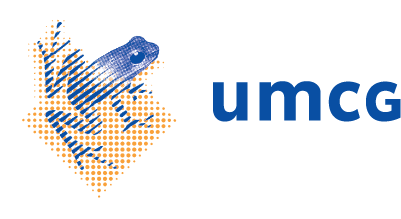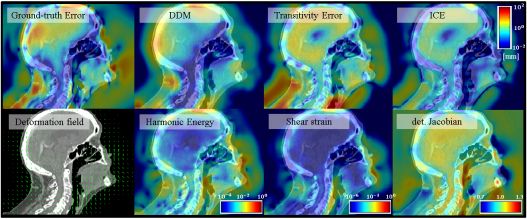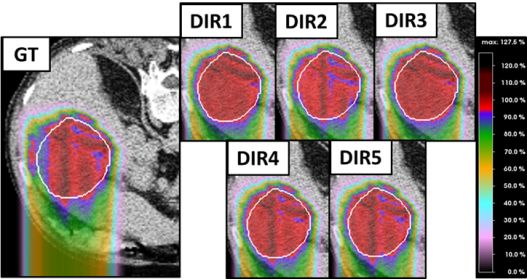Deformable Image Registration (DIR)
Establishing measures to evaluate DIR
Although deformable image registration (DIR) algorithms are increasingly available in the field of radiation oncology, their use for dose accumulation of the fractionated treatment course is limited because of intrinsic uncertainties in the deformation algorithm. A tool that allows an estimation of DIR uncertainties is therefore needed. Defining the DIR uncertainties for each individual patient is only practically realistic when this tool is fully automated. We currently investigate complementary measures of DIR uncertainty, for datasets of head and neck (HN) cancer and lung cancer patients.
The ultimate goal is to build a fully automated DIR quality assurance tool, to assess regions in which the deformable registration is not accurate. Various DIR algorithms or DIR settings can then be used to tune the registration, and to allow dose mapping and dose accumulation.
People involved
Roel Kierkels, Lydia den Otter, Erik Korevaar, Charlotte Brouwer, Hans Langendijk, Arjen van der Schaaf, Antje Knopf, Marianna Sijtsema
References
R. G.J. Kierkels et al. An automated patient-specific and quantitative approach for deformable image registration evaluation. Radiotherapy and Oncology 2016 119:S29-S30 (Oral Communication)
M.J. Gooding, C.L. Brouwer et al. Patient Specific Quantitative Assessment of Deformable Image Registration Quality Applied to Head and Neck Adaptive Therapy. Medical Physics 2015 42(6):3654
R. G.J. Kierkels et al. “An automated, quantitative, and case-specific evaluation of deformable image registration in computed tomography images” Phys Med Biol 2018 63(4) (pdf)
C.L. Brouwer, R.G.J. Kierkels et al. “The effects of computed tomography image characteristics and knot spacing on the spatial accuracy of B-spline deformable image registration in the head and neck geometry” Radiation Oncology 2014, 9:169 (pdf)
Dosimetric influence of various DIR algorithms
Motions estimated from 4D imaging using a deformable image registration (DIR) method can result in inaccuracies, directly influencing the planned dose distributions and clinical decision-making. This project focusses on assessing DIR-induced dosimetric uncertainties for 4D dose calculations of scanned proton plans. An error bar for interpretation of individual dose distributions is provided since a dense ground truth (GT) motion for this specific application is available.
People involved
Cássia Oraboni Ribeiro, Roel Kierkels, Antje Knopf, Hans Langendijk
Collaborators
Paul Scherrer Institut (PSI), Center for Proton Therapy, Villigen PSI, Switzerland:
Ye Zhang, Anthony Lomax, Damien Weber
References
C. O. Ribeiro et al. “Assessment of dosimetric errors induced by deformable image registration methods in 4D pencil beam scanned proton treatment planning for liver tumours”. Radiother. Oncol. 2018; 128(1): 174-181.

 English
English
 Nederlands
Nederlands

